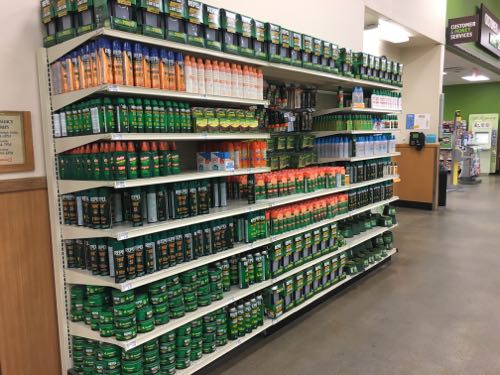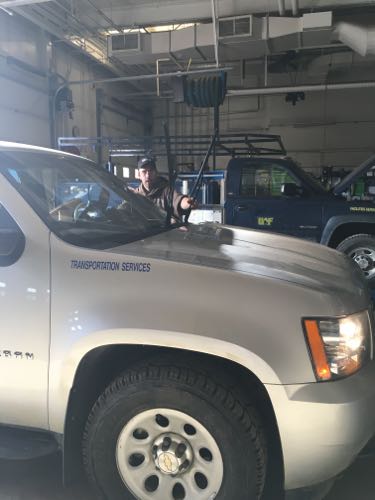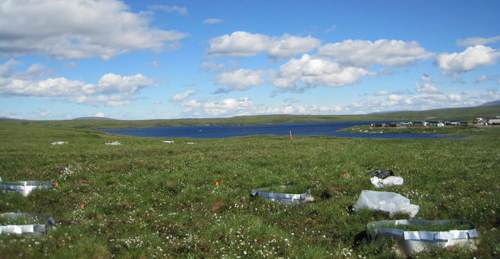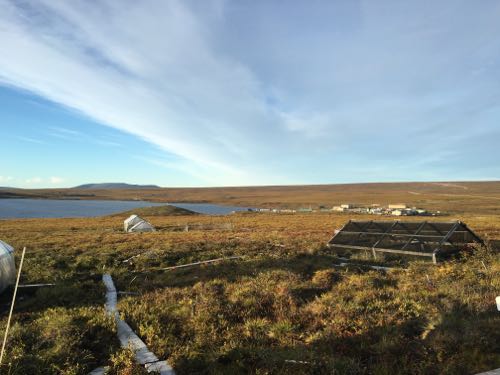When you’ve already traveled the 250 miles of the Dalton Highway to get from Fairbanks to Toolik twice, you should know what to expect, right? Think again.
The Night Before
The night I arrived in Fairbanks, I popped over to Fred Meyer to pick up some snacks for the 6-8 hour drive up to Toolik. If you’ve never been to a Fred Meyer, you’re missing out. Picture a store that has a little of everything: a little Target, a little Wal-Mart, a little Cabela’s (or similar outdoor store), a little Whole Foods (fantastic cheese counter) and a lot of regular grocery store. Back at my first orientation in 2013, one of our teachers, Tom Lane, missed it so much that he strapped on a pair of cross country skis and headed over there in the cold February evening for some trail mix. True story.

The Trip Begins
Saturday morning, I met Becky Hewitt in the parking lot of my hotel and readied myself to pick up the rest of our team – or so I thought. After I threw my pack in the truck, Becky told me that we had a MAJOR problem – the windshield wipers on the truck were broken. While this might not seem like a big deal on a sunny, cloudless day, if you’ve ever driven on muddy, back roads for more than 15 minutes, you know that it is. The Haul Road is muddy, dusty, dirty, rocky – and is populated by giant 18 wheelers hauling materials back and forth from the oil fields at Prudhoe Bay to Fairbanks. As if the trucks weren’t bad enough, the weather along the road can be unpredictable – it snowed last week.
Needless to say – we weren’t going anywhere unless the truck was fixed. Thankfully, a mechanic from University of Alaska, Fairbanks (where the truck was rented from) was on call and able to get the truck’s wipers fixed – in the end, we were only delayed an hour or so.

The Science Truck
Now we were ready to pick up a few more scientists for the 6-8 hour drive up the Dalton. While Michelle wasn’t able to make this trip at the last minute, there were 3 other researchers in our truck: Dr. David McGuire, Dr. Helene Genet and Dr. Lee Taylor. The great thing about climate research (and a lot of scientific research) is that it is an extremely collaborative science. Many of the experiments done at Toolik have implications for other research done throughout the Arctic, and scientists freely share ideas and data.
I wish that I could have captured some of the conversations that were happening on our drive up to Toolik. ClimateThe average weather over a particular region of the Earth. Climate originates in recurring weather phenomenon that result from specific types of atmospheric circulation. science, like any content area in science, is complex. Sure – there is a large question – how will the Arctic respond as our global temperature warms – but there are so many tiny little questions embedded in that larger one. The “Arctic” is a complex ecosystem – one swath of tundra has thousands of biotic factors and just as many abiotic factors. One scientist can’t study it all, which is why the 4 scientists in the truck were bouncing ideas and questions off of each other for the entire ride. Conversations ranged from permafrost to symbiotic relationships between plants and fungi to DNA analysis of those same fungi. The ride up the Dalton went quickly (well, not that quick – it was still over 6 hours) and before I knew it, we were crossing the Brooks Range at Atigun Pass.
If you have the time, check out this awesome timelapse video PolarTREC teachers Lauren Watel and Regina Brinker made in 2014. If you don’t have the time – skip to minute 7:45 to see the Brooks Range and the high Arctic tundra!
Toolik – 3 Years Later
As we rolled into Toolik Field Station, much had stayed the same and much had changed. The biggest difference I noticed was the color of the tundra. I was arriving only about 2 weeks after I had been here 3 years ago, but the hills were covered in beautiful ambers and reds, rather than the vibrant green during my last visit.


I’m glad to be back.


Comments